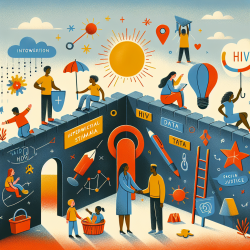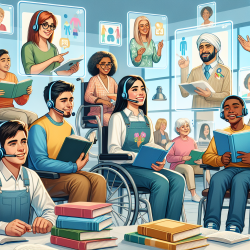Introduction
In the realm of speech-language pathology, practitioners are constantly seeking innovative approaches to improve outcomes for children. A recent study titled HIV, Gender, Race, Sexual Orientation, and Sex Work: A Qualitative Study of Intersectional Stigma Experienced by HIV-Positive Women in Ontario, Canada offers valuable insights into the complex interplay of stigma and discrimination. While the study focuses on HIV-positive women, its findings can inform practices in speech-language pathology, particularly in understanding and addressing intersectional stigma among children with diverse backgrounds.
Understanding Intersectional Stigma
The study by Logie et al. (2011) highlights the multilevel forms of stigma experienced by HIV-positive women, including HIV-related stigma, sexism, racism, homophobia, and transphobia. These forms of stigma operate across micro (individual), meso (community), and macro (organizational) levels. This intersectional model can be applied to speech-language pathology to better understand the diverse challenges faced by children from marginalized communities.
Applying Insights to Speech-Language Pathology
Practitioners can enhance their skills by incorporating the following strategies inspired by the study:
- Micro Level: Recognize and address individual biases and stereotypes that may affect the therapeutic relationship. This involves self-reflection and ongoing education on cultural competence.
- Meso Level: Foster inclusive environments within therapy groups and educational settings. Encourage peer support and social networks among children to reduce feelings of isolation and enhance resilience.
- Macro Level: Advocate for systemic changes in educational and healthcare policies to ensure equitable access to services for all children, regardless of their background.
Encouraging Further Research
The findings from the study underscore the importance of intersectional approaches in understanding and addressing stigma. Speech-language pathologists are encouraged to engage in further research to explore how intersectional stigma affects communication disorders and therapy outcomes in children. By collaborating with researchers and community organizations, practitioners can contribute to the development of evidence-based interventions that promote social justice and health equity.
Conclusion
By integrating insights from intersectional stigma research, speech-language pathologists can enhance their practice and create more inclusive and effective therapeutic environments. This approach not only improves outcomes for children but also advances the field towards greater social justice and equity.
To read the original research paper, please follow this link: HIV, Gender, Race, Sexual Orientation, and Sex Work: A Qualitative Study of Intersectional Stigma Experienced by HIV-Positive Women in Ontario, Canada.










